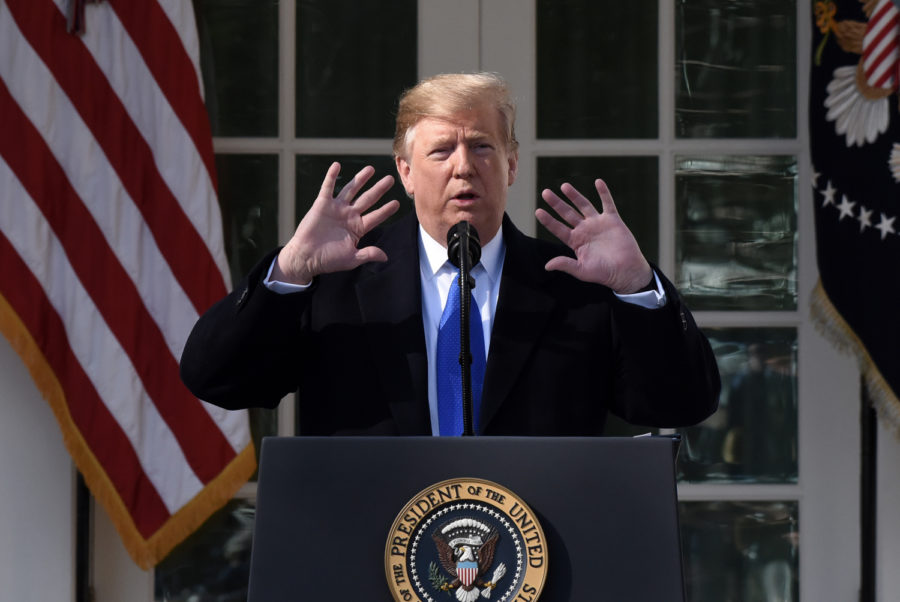Editorial: The wall isn’t a national emergency
U.S. President Donald Trump declares a national emergency to build his promised border wall during a Feb. 15 press conference in the Rose Garden of the White House in Washington, D.C.
February 18, 2019
When Congress denied President Donald Trump’s demands for enough money — almost $6 billion — to fund a border wall separating Mexico and the United States, he decided to find a way to sidestep this crucial check on his power.
He did so by declaring a national emergency, a presidential power that was codified in the National Emergencies Act in 1976 and has been used dozens of times since. With this declaration, the president now has powers outside of what he can normally do as head executive, including the ability to move money from other government projects to fund “military construction projects not otherwise authorized by law.”
What Trump fails to recognize in all this is that there is no crisis at the border. His national emergency creates far more problems than it solves and is a complete overextension of executive powers.
Past presidents have used their powers to declare a national emergency following natural disasters or terrorist attacks. George W. Bush declared a national emergency after 9/11. Others have used national emergencies to limit business dealings with other countries. Barack Obama used one in 2009 during the swine flu epidemic.
The Trump administration has treated the wave of asylum-seekers at the border as a national emergency, but the administration believes the real national emergency is Congress refusing to let him get his way. Trump even acknowledged it himself.
“I want to do it faster,” Trump said in a press conference from the Rose Garden on Friday. “I could do the wall over a longer period of time. I didn’t need to do this, but I’d rather do it much faster.”
Since one of the purposes of Congress is to keep the president in check, Trump not getting his way isn’t unusual. It’s hardly a national emergency on par with tragedies like 9/11.
In fact, the “crisis” at the border is hardly a national emergency. The number of people arrested for illegally crossing the border was at a 46-year low as of 2017, and the waves of people trying to enter aren’t terrorist groups but families and individuals seeking refuge.
What we need at the border isn’t a wall to keep a handful of people from attempting to enter illegally. What we need is better facilities for processing, holding and caring for the migrants who have every right under both U.S. and international law to seek and be evaluated for asylum.
The wall is the campaign promise Trump just can’t let go, despite the 58 percent of Americans who oppose its expansion on our southern border — not to mention the majority of Congress. Most people seem to recognize that it will do more harm than good.
Government projects that have actually been approved by Congress to receive funding will lose that funding to finance the wall. Landowners along the border will have their property taken away by eminent domain for a project that most don’t actually want. California, New York and advocacy group Public Citizen have already filed lawsuits against the president and will likely be joined by many more similar suits.
Trump shouldn’t be able to declare a national emergency just because he didn’t get what he wanted. He’s setting a dangerous precedent by which any future president could declare a state of national emergency to bypass Congress and institute any number of changes that should involve congressional approval.
This is just another example of how willing Trump is to overlook the rules of governance to get what he wants.








